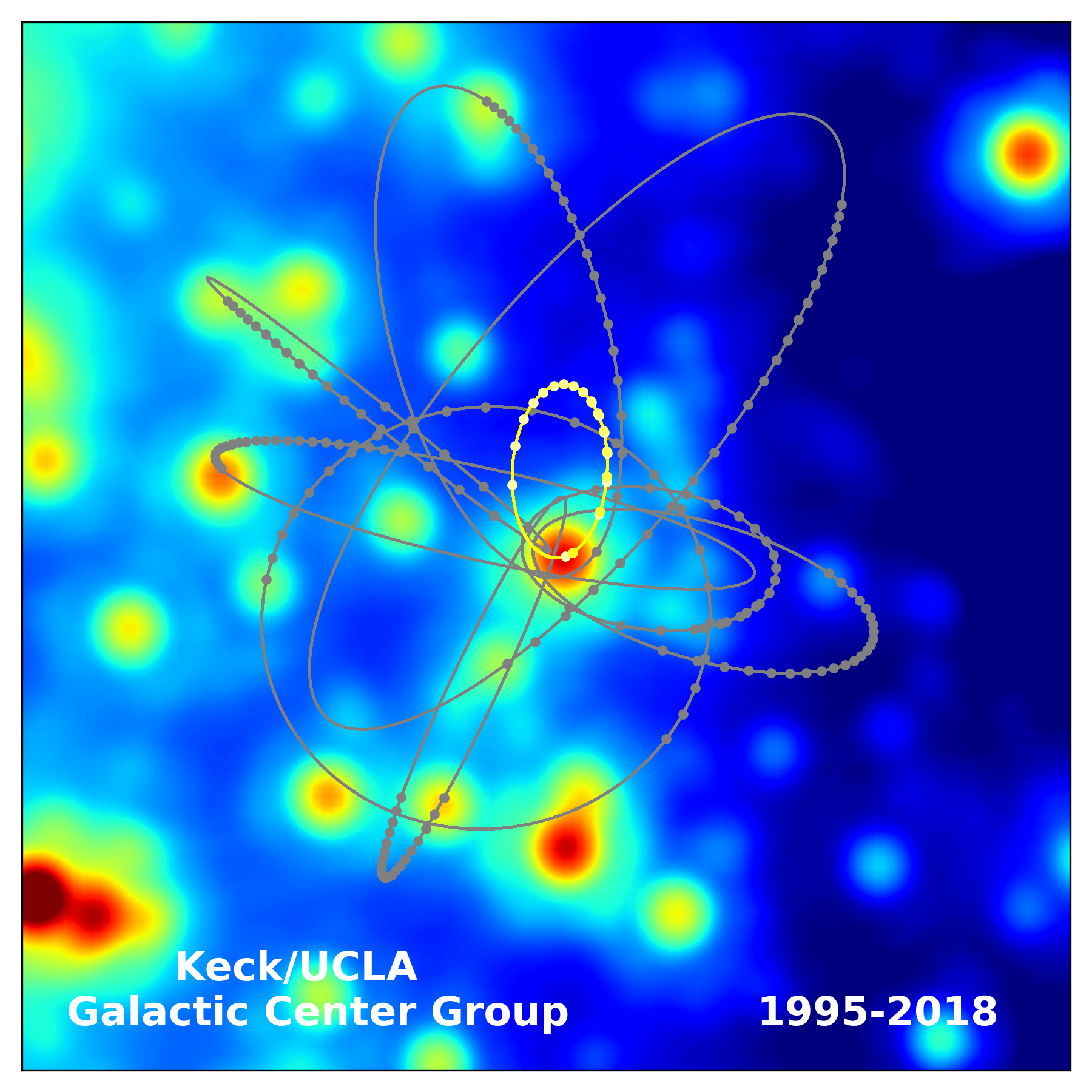The orbit of a star around the supermassive black hole of the Milky Way confirms the validity of Einstein's theory of relativity
The star S2 draws an ellipse around Sagittarius A *, the black hole of the galactic nucleus, and its monitoring over twenty-six years has allowed studying the gravity in extreme environments. Researchers from the Institute of Astrophysics of Andalusia (IAA-CSIC) participate in the results, which are published in the journal Science
26,000 light-years from Earth, in the central regions of the Milky Way, is Sagittarius A*, a supermassive black hole with a mass equivalent to about four million suns. Black holes are objects so compact that not even light can escape their gravitational influence, and it was the detailed study of the orbits of nearby stars that allowed their mass to be known. Now, one of those stars, known as S2, has made it possible to study in detail gravity in extreme environments and confirm the validity of Einstein's theory of relativity.

THE SPACETIME
Einstein, in his theory of relativity, showed that time and space, which had always been considered differentiated entities, actually formed a single entity: spacetime. Spacetime is the stage in which all the physical events of the universe take place, and it is a malleable fabric that curves in the presence of matter. This curvature is the cause of the gravitational effects that govern the movement of bodies (both that of the planets around the Sun and that of the galaxy clusters), and the supermassive black holes constitute an ideal environment to verify this effect.
“Our observations are consistent with the theory of relativity", says Andrea Ghez, a researcher at the University of California (UCLA) who leads the work. “However, relativity cannot fully explain gravity within a black hole, and at some point we will have to go beyond Einstein to a more complete theory of gravity that explains these extreme environments”.
The results have been possible thanks to the star S2, which draws a very pronounced ellipse around Sagittarius A* and which, at the point of maximum approach, is only about three times the distance between the Sun and Pluto. At this distance, and due to the enormous gravitational force of the black hole, relativity predicts that the photons (particles of light) should suffer a loss of energy, which is known as gravitational redshift. And it is precisely what the scientific team has measured, confirming a result published in 2018.
“This type of experiment is subject to a large number of possible errors, and unfortunately the team that disseminated the previous result did not publish all the data, something that should be standard today", says Rainer Schödel, researcher at the Institute of Astrophysics of Andalusia (IAA-CSIC) involved in the work. With this work we provide an independent verification of an extremely difficult experiment, very necessary in this case, and we provide all the data and statistical analyses".
The key data in the investigation were those taken with the Keck telescope (Hawaii) during the months of the closest approach between the star and the black hole. These data, in whose acquisition participated Eulalia Gallego (IAA-CSIC), were combined with the measurements made in the last twenty-four years, which made it possible to obtain the complete orbit of the star in three dimensions and, in turn, check the validity of general relativity.
"This result is a clear example of the enormous potential of the galactic center as a laboratory not only to study galactic nuclei and their role in the evolution of galaxies, but also to resolve fundamental physics issues", concludes Rainer Schödel (IAA-CSIC), principal investigator of the GALACTICNUCLEUS project, which seeks to resolve open issues by increasing our current knowledge of the stellar population closest to Sagittarius A* by more than a hundred times.
T. Do et al. Relativistic redshift of the star S0-2 orbiting the Galactic center supermassive black hole, Science. https://science.sciencemag.org/cgi/doi/10.1126/science.aav8137
Instituto de Astrofísica de Andalucía (IAA-CSIC)
Unidad de Divulgación y Comunicación
Silbia López de Lacalle - sll[arroba]iaa.es - 958230676
https://www.iaa.csic.es
https://divulgacion.iaa.csic.es

